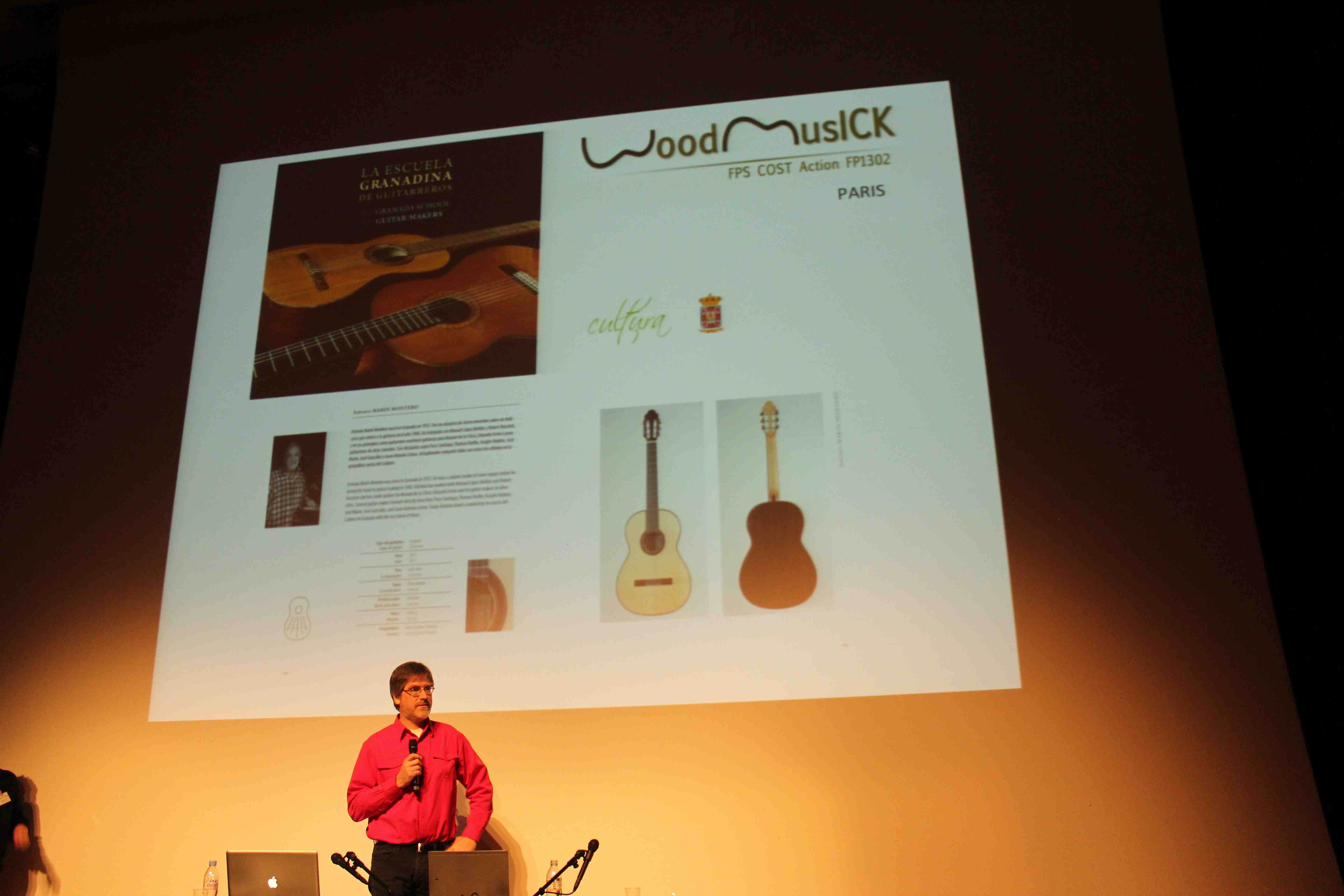The opening conference of the Cost Action FP1302 “WoodMusICK” took place in Paris on February 27 and 28 and I was invited as an instrument-maker and restorer representing Spain.
“The main objective of this COST Action will be to improve the conservation of our wooden musical instruments heritage by increasing interaction and synergy between wood scientists and other professionals (including instrument makers) applying wood scientists, curators, organologists and makers towards the study, conservation and restoration of wooden instrument collections of artistic and historic interest, and to offer a novel and reliable, independent and global knowledge on these collections”, from the webpage of WoodMusICK.
Besides being asked to lend our expertise to the rest of the researchers we were asked to make proposals for directions that work should take in achieving the main objective. I proposed that we develop a restoration protocol for the guitar because for other instruments such a protocol already in place (to varying degrees) and that the training and formation of instrument-makers and restorers be developed at the European level. This is basically because in this country many of the initiatives which have been proposed or put into practice are seriously flawed.
The other thing that we were asked to do was of course present the work that we had done previously. I spoke briefly about my work with historical guitars and the three years I have spent working on the book about the Granada guitar-makers. The Granada provincial government put together a draft of the book so that I had something to show for our efforts.
Highlights for me of the two days were the presentations by Paul Poletti, Claudia Fritz and Renato Meucci as well as a visit with Bruno and Catherine Marlat. Mr. Poletti is a specialist in keyboard instruments in Barcelona at ESMUC and talked about reverse engineering historical instruments. Ms. Fritz presented her latest research with historical vs. new violins which takes off from her polemic study of last year. Renato Meucci presented a very well-developed charge that we are dating, identifying and valuing old violins based on the opinions of a small group of people (appraisers/dealers) who have a vested interest in over-valuing or under-valuing (depending on the case) these instruments and suggested the use of more scientific methods.
